
According to the National Lightning Safety Institute, it is not uncommon for lightning to strike a vehicle, moving or parked. The effects of the strike vary from vehicle to vehicle depending on the circumstances related to the storm and vehicle type.
For insurance adjusters, it is easy enough to determine that major visible damage to the vehicle – such as large burn marks in the paint, shattered windows or blown tires – was, more likely than not, caused by a major lightning strike. In other cases, the damage may not be as obvious and may be misidentified as stone chips.
Modern-day vehicles are more susceptible to the effects of lightning due to the amount of microelectronics controlling vehicle systems. Newer vehicles have engine control modules, body control modules, shift control modules and door control modules, to name a few. All of these components have individual fused circuits; however they use the same ground path. These low-voltage components can be damaged when the polarity of voltage is reversed by energizing the ground path. Because today’s vehicles use fuses on the power-supply side of a component, the fuses may still be functional after a lightning strike event though the individual component may be destroyed.
A recent case we took care of involved a new 2015 Jeep Cherokee parked for display in a parking lot. A lightning-producing storm came through the area. One of the salesmen noticed the driver’s window was in the down position. He identified the vehicle and got the keys to roll the window up. The vehicle did not respond to the key. The service department was contacted to jump start the vehicle. The vehicle still did not respond. After days of diagnosis by the technician, small marks were observed on the metal luggage rack above the driver’s door. Those marks, after microscopic examination, were determined to be from a lightning strike. Further examination of the vehicle revealed three strike points on the top edge of the luggage rack, one discharge mark exiting the luggage rack, one entry mark in line with the luggage rack discharge mark on the body above the driver’s door, and a final exit mark located at the right rear aluminum alloy wheel.
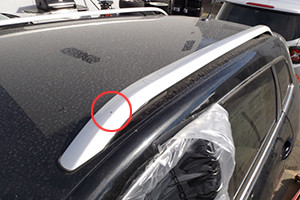
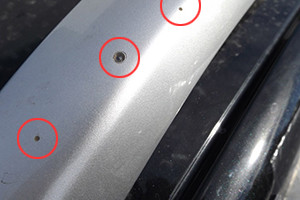

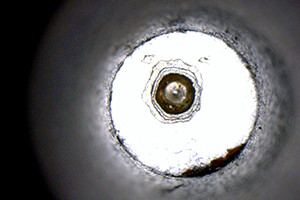

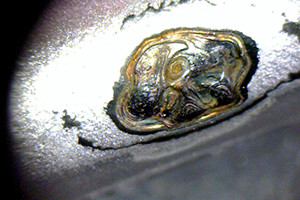
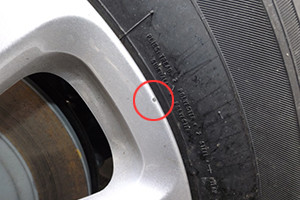
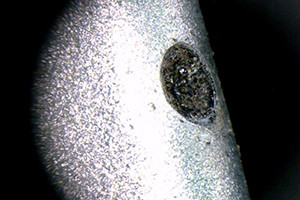
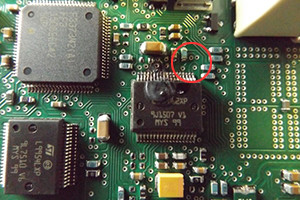
It was discovered during the systems diagnosis process that the electronic modules located between the strike point (luggage rack) and the discharge point (right rear rim) was shorted. There were no open fuses in the vehicle. None of the vehicle’s wiring circuits or connectors showed any thermal damage. The affected modules were removed from the vehicle and further diagnosed in the laboratory. Each module affected showed isolated internal circuit board damage in the way of burning and microchip damage. The harness connector terminals showed no damage. The voltage spike on the ground side of the circuit was enough to destroy at least one of the circuit board microchips in multiple electronic modules resulting in the component internally short-circuiting.

The damage resulting from the lightning strike on this vehicle’s modules was compared to damages observed on a different vehicle module circuit board resulting from overcharging. There was a significant difference in the electrical damage between over voltage applied to the power side of the module versus power applied to the negative side of the module. Over voltage damage on the power side of the circuit showed a majority of the integrated circuit (IC) microchips were damaged, the power transistors were blown, and multiple fuses were affected.
If lightning strikes, take a closer look. Examining a vehicle’s module circuit boards is an effective way to determine what happened to the electronics and move a case toward resolution.
Mike McGee, CFI, CFEI, CVTI, ASE
Senior Investigator, Investigative Locksmith
Unified Investigations & Sciences, Inc., a Sedgwick company